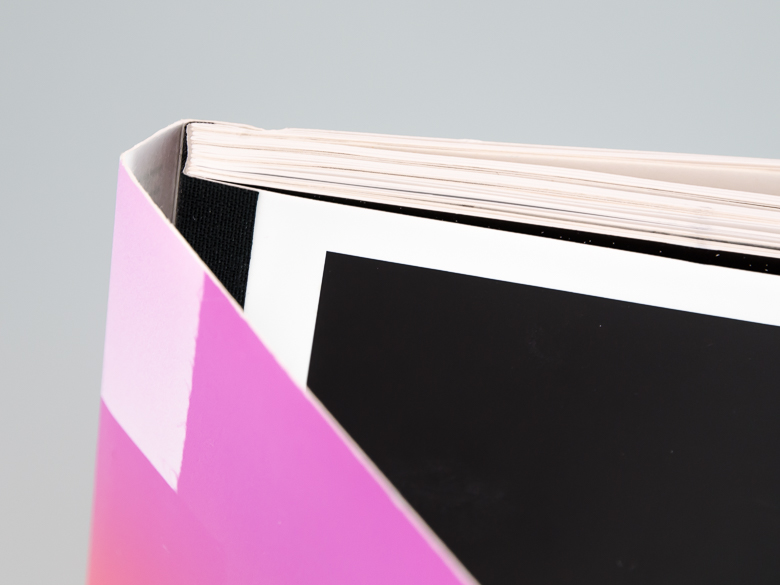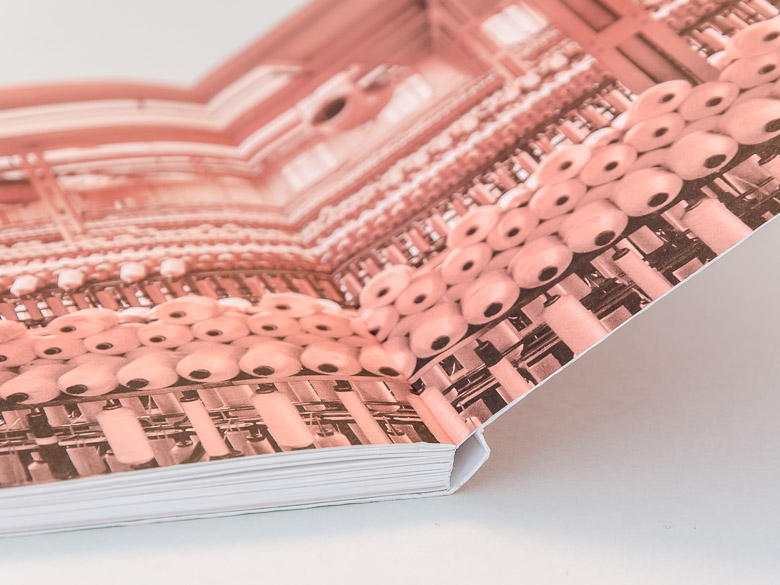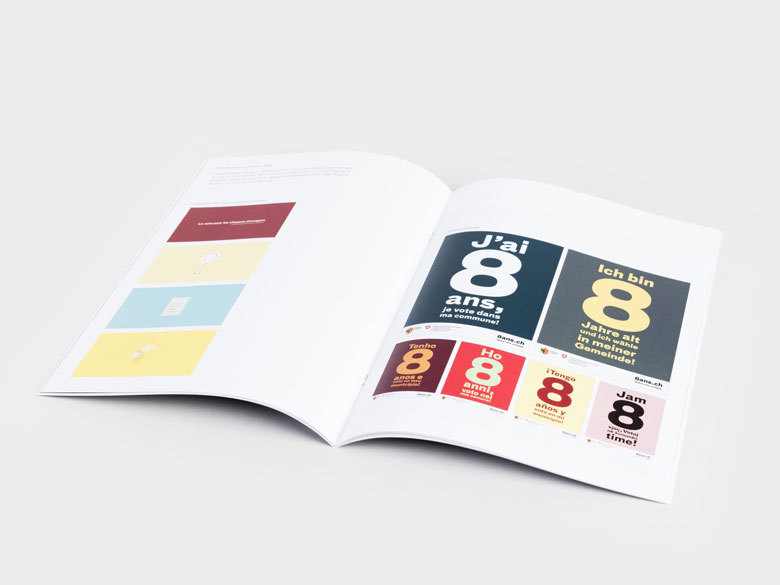
Wire-binding or backstitch binding is the most simple and cost-effective type of brochure. Wire-bound brochures are used for printed materials of all kinds with a thickness of 1-5 mm.

Thread and knot binding involves feeding the thread through the fold by hand or by machine. Hand-crafted production and threads of different colours allow real creativity. Thread and knot binding is mainly used for image publications, school books and art publications with a thickness of 1-8 mm.
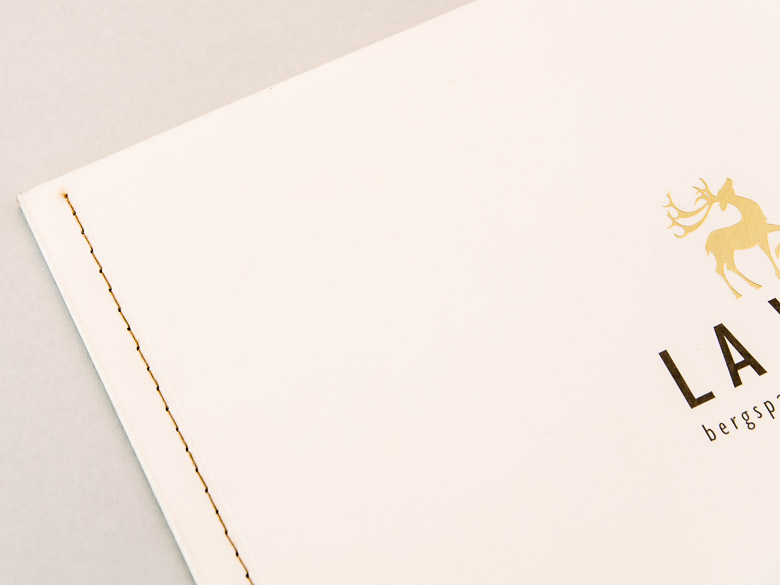
Brochures with Singer sewn binding are sewn through with threads in the binding. The thread remains visible or is concealed by a cover. Singer sewn binding is used for image publications and passports with a thickness of 1-5 mm.
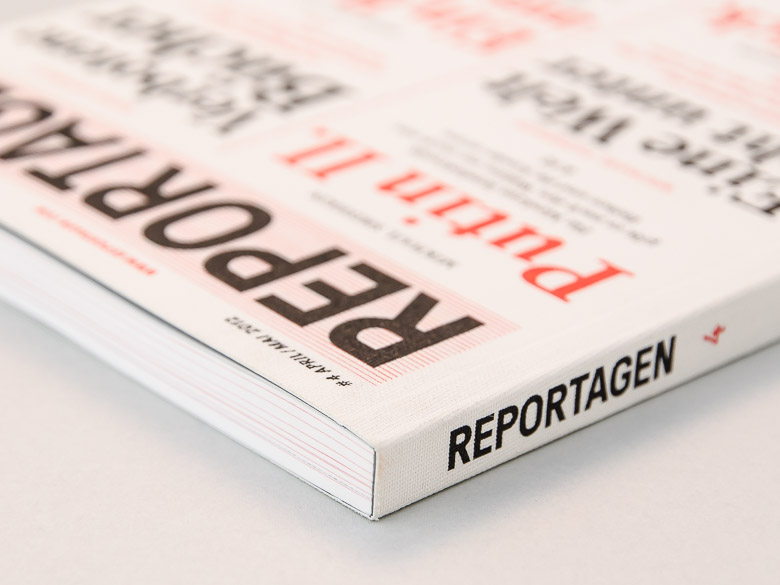
The simplest and most frequently used brochure type combines a thin card cover glued to the book block on the back. The range of applications for simple brochures is very wide, example uses include company accounts, paperbacks, product catalogues and other thick, short-lasting publications.
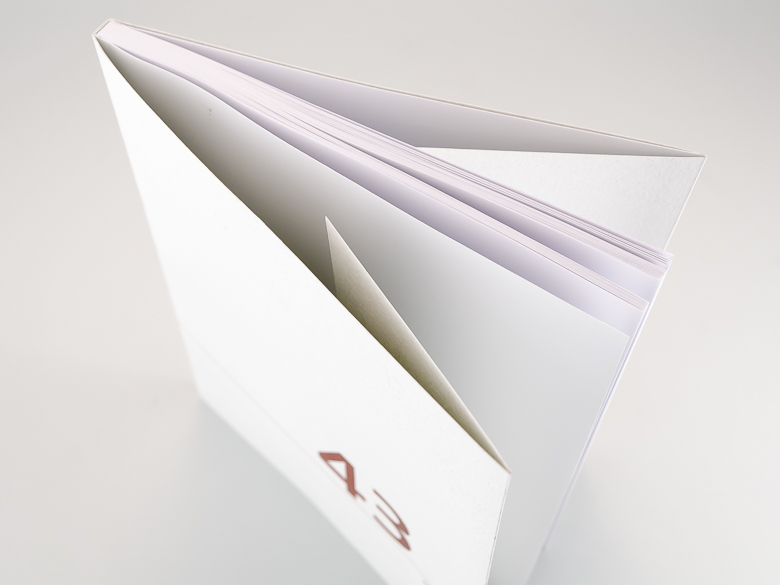
The English brochure consists of an unprinted card cover with a printed protective cover around it. This has fold-in flaps front and back. Generally, the protective cover is glued to the card cover on the back. This slightly more complex brochure is used for bibliophilic works, commemorative publications, art catalogues or other image publications.
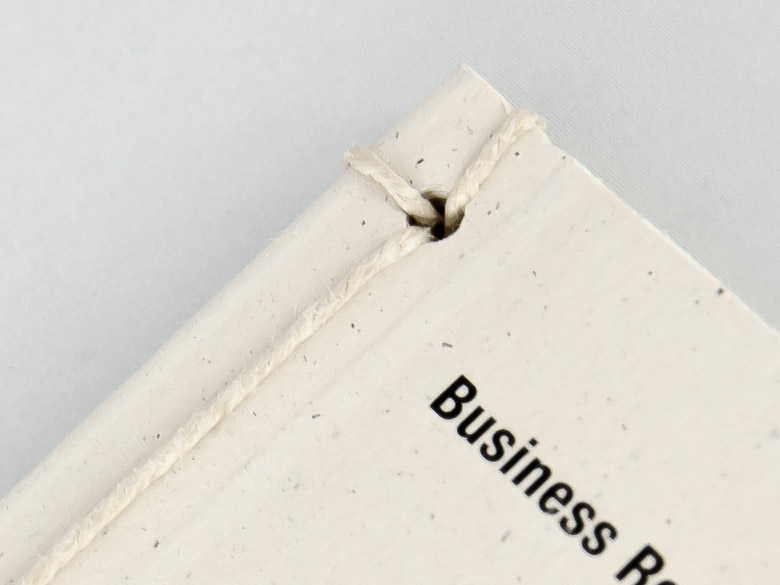
In a Chinese brochure, the content and cover pages are perforated with an awl or small drill one centimetre away from the binding. The thread is tacked by hand through the perforated stack of sheets. This decorative binding originates in China, where it was it used as a clean, pretty way of binding a stack of sheets.

